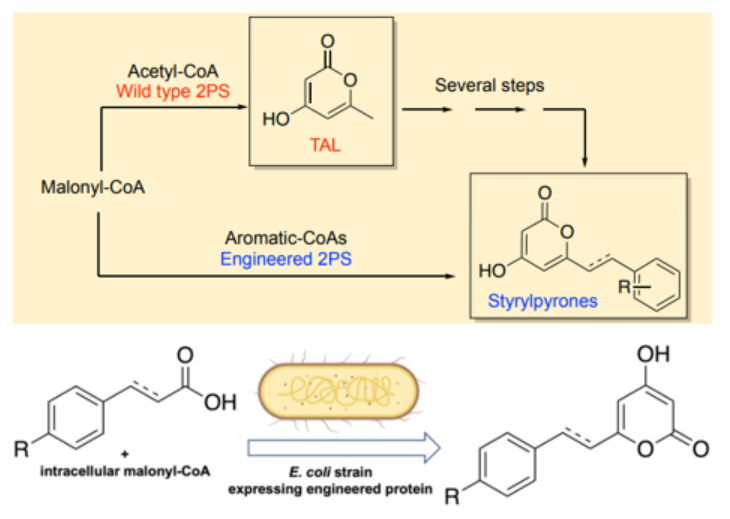Reshaping the 2-Pyrone Synthase Active Site for Chemoselective Biosynthesis of Polyketides
Themes: Conversion
Keywords: Metabolomics
Citation
Zhou, Y., Mirts, E.N., Yook, S., Waugh, M., Martini, R., Jin, Y.S., Lu, Y. Nov. 18, 2022. “Reshaping the 2-Pyrone Synthase Active Site for Chemoselective Biosynthesis of Polyketides.” Angewandte Chemie International Edition. DOI: 10.1002/anie.202212440.
Overview

Engineering enzymes with novel reactivity and applying them in metabolic pathways to produce valuable products are quite challenging due to the intrinsic complexity of metabolic networks and the need for high in vivo catalytic efficiency. Triacetic acid lactone (TAL), naturally generated by 2-pyrone synthase (2PS), is a platform molecule that can be produced via microbial fermentation and further converted into value-added products. However, these conversions require extra synthetic steps under harsh conditions. We herein report a biocatalytic system for direct generation of TAL derivatives under mild conditions with controlled chemoselectivity by rationally engineering the 2PS active site and then rewiring the biocatalytic pathway in the metabolic network of E. coli to produce high-value products, such as kavalactone precursors, with yields up to 17 mg/L culture. Computer modeling indicates sterics and hydrogen-bond interactions play key roles in tuning the selectivity, efficiency, and yield.
Data
- Titer Calculations
- Plots
- Similarity and Parameter Comparisons
- Condition Optimization